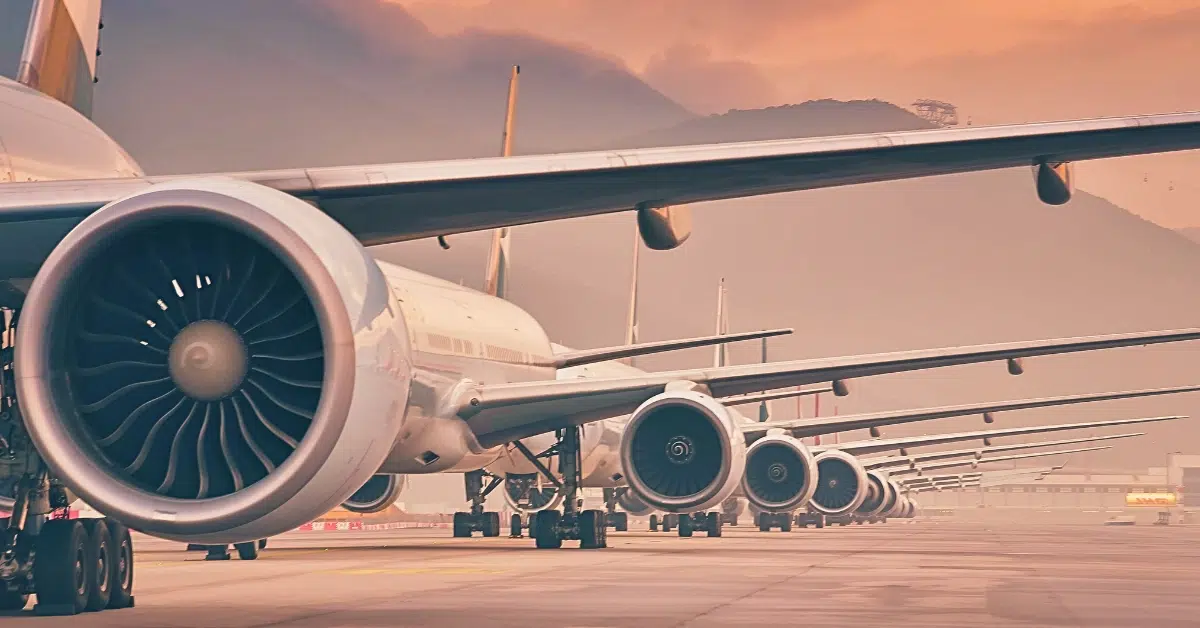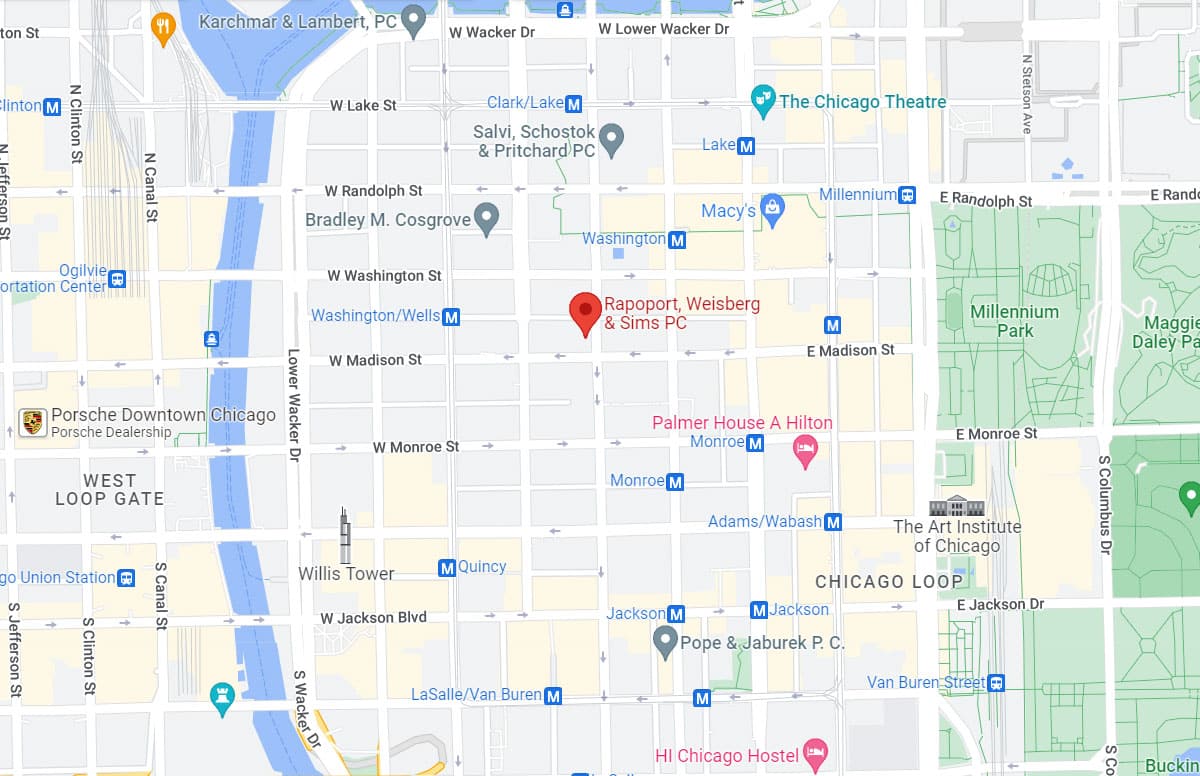If you or your loved one suffered injuries in an aviation accident, there may be significant legal rights at play. You may be able to make a claim against an airline to recover compensation for your losses. In some situations, your lawyer may advise you to sue an airline for damages.

The legal process varies based on where and how the accident occurred. Experienced aviation accident attorneys can make a difference in navigating competing legal regimes.
For instance, international flights almost always have different rules from domestic flights when it comes to making a claim or filing a lawsuit. Understanding the most common causes of aviation accidents and how liability is determined can help you make an informed decision about how to proceed with your aviation injury case.
What Is an Aviation Accident?
Let’s start with what constitutes an accident. The United States Code of Federal Regulations defines an aircraft accident as:
“An occurrence associated with the operation of an aircraft which takes place between the time any person boards the aircraft with the intention of flight and all such persons have disembarked, and in which any person suffers death, or serious injury, or in which the aircraft receives substantial damage.”
49 CFR 830.2.
What Are the Most Common Injuries in Aviation Accidents?
The Federal Aviation Administration (FAA) regulates airlines through a complex set of regulations known as the Federal Aviation Regulations, or sometimes called “FARs” for short. These can be found in Title 14 of the Code of Federal Regulations. Most commercial aircraft that have more than 30 seats — such as the major air carriers that fly jets — are regulated under Part 121 of the FARs.
The National Transportation Safety Board (NTSB) has detailed data as it relates to aviation accidents involving Part 121 airlines. For instance, NTSB data from 1983 to 2017 shows that most Part 121 accidents do not result in fatalities, although the majority do involve serious injuries to passengers.
Source: NTSB Safety Data.
What Are the Most Common Causes of Aviation Accidents?
There are various reasons that aviation accidents happen, and it’s not uncommon for multiple factors to play a role.
According to data from the NTSB, the top five defining events for Part 121 accidents from 2009-2018 include turbulence, runway events, cabin safety events, ground collisions, and ground handling:
Source: NTSB Safety Data.
One of the most common causes of aviation accidents is inclement weather. Poor weather conditions, such as extreme winds or storms, can impact the pilot’s ability to control the plane. Even though weather conditions cannot be controlled by the airline, you may still be able to file a lawsuit against the company to recover compensation for your losses. If the airline knew about the risks, and decided to fly anyway, you can hold them liable for damages.
One example is the 20-mile rule, found in a 2013 FAA Advisory Circular. It advises pilots of the dangers of getting too close to thunderstorms and advising them to keep a safe distance because of the potentially hazardous turbulence known to be present in all thunderstorms.
Faulty equipment is another common cause of aviation accidents. Design defects, faulty parts, or incorrect procedures during the manufacturing process can cause engine failures, doors to detach, landing gear to fail, and other problems that put passengers at risk. Data compiled by NASA identified the most common causes of component failures, with engine issues being the overwhelming cause of most system failures on commercial flights.
Source: NASA/TM – 2011-216967.
Alternatively, improperly maintained aircraft are sometimes the culprit in aviation accidents. Normal wear and tear happens, and parts must be maintained, repaired, and replaced on schedule. Failing to complete these tasks raises the risk of equipment failures that can cause deadly aviation accidents. A NASA analysis of NTSB and FAA data from 1988-2003 found that of 179 commercial aviation accidents that involved an engine malfunction, maintenance error had occurred in 38% of those accidents.
Human errors can also cause aviation accidents. One unfortunately recurring cause of human error in aviation accidents involves violations of the “sterile-cockpit” rule, which is when the flight crew engages in “non-essential” conversation below 10,000 ft. or at a critical flight phase. Violations of this rule have led to some of the worst aviation disasters in modern history.
Not all human errors are the fault of the pilot, however. Pilots must rely on air traffic controllers to guide them and provide crucial advice on how to navigate the aircraft. Mistakes made by air traffic controllers can also affect the pilot’s decisions through no fault of his or her own.
What Are the Laws and Regulations Applicable to Airline Liability?
Federal Preemption
In some instances, The Federal Aviation Act (FAA) may have a preemptive effect on state laws regarding airline liability in aviation accidents. This means that federal laws take precedence over any conflicting state laws. This is a complicated area of the law, and having a legal team that understands these complex issues is critical to ensuring that you can properly seek justice.
The Montreal Convention
The Montreal Convention, an international treaty ratified by the United States, establishes a framework for airline liability in international air transportation. It sets strict liability limits on airline liability for passenger death, injury, and baggage loss or damage, and creates a presumption of liability under certain scenarios.
The Role of State Law
In some situations, state laws can come into play alongside federal regulations. These could include:
- Damages: Each state provides its own legal regime for determining how to quantify damages. Complex rules involving which state (or sometime more than one state’s) damages law require scrutiny before initiating a claim.
- Wrongful Death Claims: Wrongful death laws may apply if a passenger dies in an aviation accident within the state, even if it’s an international flight. Each state has its own unique regime for what goes into a wrongful death claim.
- Product Liability Claims: If a mechanical failure caused by a defective airplane part contributes to the accident, product liability laws of an individual state might be applicable against the airplane manufacturer.
What Court Has Jurisdiction When You Sue an Airline for an Aviation Accident?
Aviation accident lawsuits can generally be filed in either a state court or federal court, although a careful analysis by an experienced legal team should assess the most preferential venue for a lawsuit. Detailed rules involving the application of federal jurisdiction, which may even vary in different parts of the country, require analysis as well.
How Is Liability in Aviation Accidents Determined?
Airlines are common carriers. As such, they are often held to a higher standard of care in keeping their passengers safe. Under most legal regimes, liability can be based on the concept of negligence, meaning the airline failed to exercise the care a reasonable airline would under similar circumstances. Negligence can stem from various factors, including pilot error, mechanical failure, inadequate maintenance, or air traffic control errors. If an airline breaches this duty of care, and it causes harm to a passenger, they can be held liable for damages such as medical expenses, lost wages, and pain and suffering.
What Factors Can Impact Liability in Aviation Accident Claims?
Various factors can impact liability in aviation accident claims. Often, an accident has happened because multiple responsible parties have each failed to do their jobs correctly, overcoming cross-checks intended to trap errors before they become accidents. By carefully considering all factors, aviation accident lawyers can build a strong case to hold the responsible parties accountable and secure fair compensation for victims and their families. Attorneys will review:
- Maintenance Records: A meticulous maintenance history of the aircraft demonstrates the airline’s commitment to safety standards. Conversely, a history of neglected maintenance or skipped safety checks can strengthen the case for negligence.
- Pilot Qualifications and Training: Investigating the pilot’s experience level, recent training records, and any medical conditions that could have impaired the pilot’s judgment can influence the liability determination.
- Flight Data Recorder Data: The flight data recorder and cockpit voice recorder data provide a critical timeline of events leading up to the accident and can reveal pilot actions, communications with air traffic control, and any warnings or malfunctions that might have occurred.
What Compensation Is Available When You Make a Claim Against an Airline for an Aviation Accident?
The compensation available when making a claim against an airline for an aviation accident can vary depending on the severity of your injuries, the laws that apply (state, federal, or international), and the outcome of your case. Here’s a breakdown of the general categories of recoverable damages:
Economic Damages
These are the concrete financial losses you’ve incurred due to the accident. Examples include:
- Medical Expenses: Past, present, and future medical bills associated with treating your injuries. This can encompass hospital stays, doctor visits, surgery costs, physical therapy, rehabilitation, medication, and any assistive devices needed.
- Lost Wages: Income you’ve lost due to your injuries and inability to work. This includes lost wages from your current job and potential future earnings if your injuries impact your long-term earning capacity.
- Loss of Earning Capacity: If your injuries prevent you from returning to your previous job or significantly limit your ability to work, you may be able to recover compensation for the future income you’ll lose due to this diminished capacity.
Non-Economic Damages
These are intangible losses that are more difficult to quantify, but still have a significant impact on your life. They can include:
- Pain and Suffering: Physical and emotional distress caused by the accident and your injuries.
- Mental Anguish: Anxiety, depression, post-traumatic stress disorder (PTSD), and other psychological trauma resulting from the accident.
- Loss of Consortium: If you’re married and your injuries impact your ability to maintain a physical or emotional relationship with your spouse, you might be able to recover compensation for this loss.
- Loss of Enjoyment of Life: Inability to participate in activities you once enjoyed due to your injuries.
- Scarring and Disfigurement: Emotional and psychological distress caused by permanent scarring or disfigurement from the accident.
An aviation accident attorney will assess your case, determine the laws and regulations that apply, and advise you on the compensation you might be eligible to receive.
